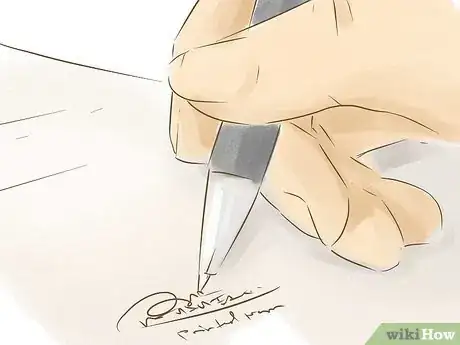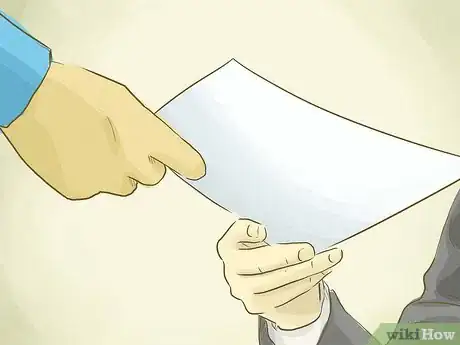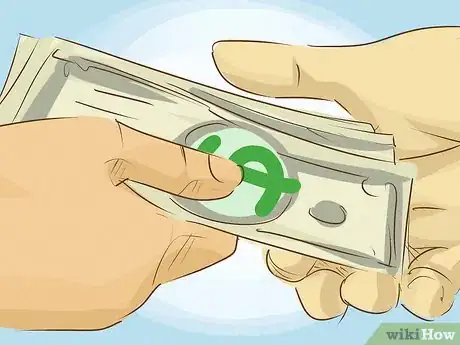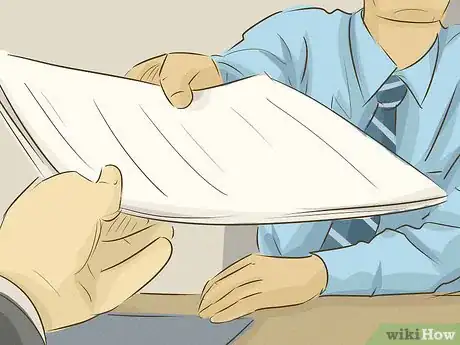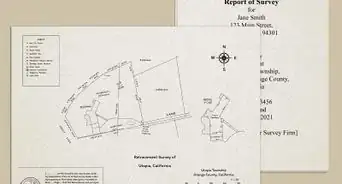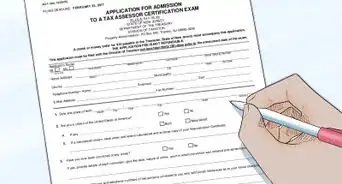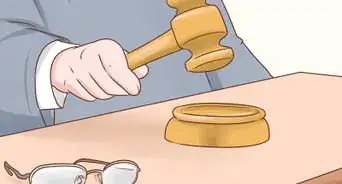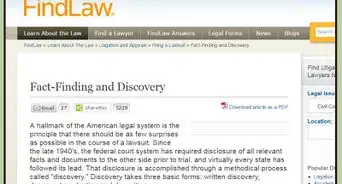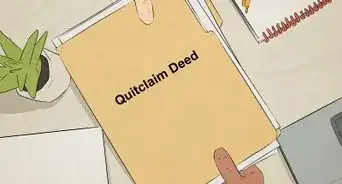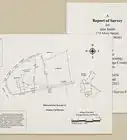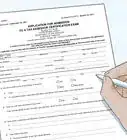This article was co-authored by Clinton M. Sandvick, JD, PhD. Clinton M. Sandvick worked as a civil litigator in California for over 7 years. He received his JD from the University of Wisconsin-Madison in 1998 and his PhD in American History from the University of Oregon in 2013.
wikiHow marks an article as reader-approved once it receives enough positive feedback. In this case, 96% of readers who voted found the article helpful, earning it our reader-approved status.
This article has been viewed 142,776 times.
Quitclaim deeds are most commonly used by individuals who transfer property to members of their immediate family, or to add or remove the name of a spouse. Unlike a warranty deed, a quitclaim deed does not make any claim that the property title is clear of liens. To file a quitclaim deed, you need to take a completed deed to the county clerk’s office and pay taxes and fees. Quitclaim deeds involve giving up important rights, and can have serious legal implications. It is always advisable to check with a lawyer before signing away your rights.
Steps
Preparing to File a Quitclaim Deed
-
1Understand quitclaim deeds. A quitclaim deed is a type of deed that transfers an interest in property from one party to another. It lists who is transferring their interest in the property (the grantor) and who is receiving it (the grantee).[1] Individuals often use a quitclaim when they want to do the following:[2]
- transfer property into or out of a revocable trust
- transfer property to a spouse as part of a divorce
- transfer interest as a co-owner to the other co-owner
- transfer property you own by yourself into co-ownership with another
- change the way you hold title to the property
-
2Pull a copy of your current deed. If you have to fill out the quitclaim deed, then you should get a copy of the current deed to the property. You will need the legal description of property, which is on the current deed.[3] See Get a Legal Description of Property for more information.
- You might also have to go to the county clerk’s office to get the copy of the deed. Ask the person working there how to get a copy.
Advertisement -
3Decide if a warranty deed is more appropriate. With a warranty deed, the seller warrants that the land is free of all liens. If the seller is wrong, then the real estate buyer can sue for compensation. With a quitclaim deed, the grantee has no recourse if someone with a lien shows up.[4]
- Accordingly, a warranty deed is probably more appropriate if you are transferring the property outside of the family.[5]
- If you need to talk to someone, then try to find a lawyer you can meet with for a short consultation. A qualified lawyer will listen to the facts of your case and advise you about whether a quitclaim deed is appropriate.
Filing the Quitclaim Deed
-
1Get the form. The county clerk should have a form for you to pick up or download. The quitclaim form for Brevard County is available for download.
- Stop by the clerk’s office and ask if a form is available.
-
2Complete the form. The form will ask for a variety of information. Type or print neatly in black ink and provide all information requested. You will probably need to provide the following:[6] [7]
- Name and address of the person who created the quitclaim deed
- Parcel Identification number to the property
- Name and address of the grantor (the person transferring the property)
- Name and address of the grantee (the person receiving the property)
- The amount paid in consideration of the deed
- The legal description of the property
-
3Have the form witnessed. You will need to have at least two witnesses for each signature on the deed. If two co-owners are transferring their interest, then you will need four total witnesses.
- All individuals should sign the deed in front of a notary. There is probably a notary at the clerk’s office. You can also find a notary in most large banks.
-
4File the form. Make copies of the quitclaim deed and take the original to the clerk of court’s office. Ask to file.
-
5Pay the fee. The fee to record the deed is $10 for the first page and $8.50 for each additional page.[8]
- You also must pay taxes. A documentary stamp tax of $.70 will be levied for each $100 of the sale, transfer, or consideration amount. If the consideration was $100,000, then you would have to pay $700.
- Miami-Dade County has a different tax schedule. A documentary stamp tax of $.60 per each $100 is assessed. Miami-Dade County also assess a surtax of $.45 per $100 if the property transferred is not a single-family residence.[9]
-
6Distribute copies. You can send a copy of the deed to the other party and keep a copy of the form for your records. Store it in a secure place, such as a safe or filing cabinet.
References
- ↑ http://www.bankrate.com/finance/real-estate/difference-between-quitclaim-and-warranty-deeds.aspx
- ↑ https://www.nolo.com/products/florida-quitclaim-deed-pr316.html
- ↑ https://www.seminoleclerk.org/wp-content/uploads/2019/03/Quit_Claim_Deed.pdf
- ↑ http://www.bankrate.com/finance/real-estate/difference-between-quitclaim-and-warranty-deeds.aspx
- ↑ http://www.bankrate.com/finance/real-estate/difference-between-quitclaim-and-warranty-deeds.aspx
- ↑ https://www.nolo.com/products/florida-quitclaim-deed-pr316.html
- ↑ https://www.seminoleclerk.org/wp-content/uploads/2019/03/Quit_Claim_Deed.pdf
- ↑ http://www.occompt.com/official-records/recording-fees/
- ↑ http://www.miami-dadeclerk.com/document_code_types_requirements_deed.asp
About This Article
A quitclaim deed is used to transfer ownership of real estate without guarantee or warranty, usually to a member of your immediate family. To file a quitclaim deed in Florida, you’ll need a copy of the current deed of the property, which you can get from your county clerk’s office. Once you’ve got the current deed, fill out a quitclaim form for your county. You can get a form from your county clerk’s office or online. When the form is completed, it needs to be signed with at least 2 witnesses for each signature. It costs $10 for the first page and $8.50 for each additional page to get the deed recorded. For more information from our Legal co-author, like whether to choose a quitclaim or warranty deed, read on.





